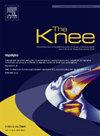儿科膝关节软骨病变的治疗选择和结果:系统回顾
IF 2
4区 医学
Q3 ORTHOPEDICS
引用次数: 0
摘要
背景:儿童膝关节软骨病变的治疗方法很多,但没有明确的共识或金标准。本系统综述分析了手术入路并评估了结果证据。方法采用自定义检索策略,检索至2025年1月的sovid Medline和EMBASE。两名评论者独立筛选了儿童膝关节软骨病理学(18岁)的研究,包括微骨折、自体基质诱导的软骨形成(AMIC)、自体软骨细胞植入(ACI)、骨软骨同种异体移植(OCA)、骨软骨自体移植(OATS)或软骨成形术。偏倚风险评估采用ROB2和未成年人。分析侧重于结果评分的改善,并根据技术、年龄、位置、失败率和病变大小进行亚组分析。结果本综述纳入18项研究(12/18病例系列),475例患者(56%为男性)。大多数研究偏倚风险高,方法学质量低。随访时间为1至9.6年。股骨内侧髁(MFC)是最常见的位置(177例)。OATS在x线摄影修复和恢复运动方面优于微骨折。OCA改善了较大缺陷的疼痛和功能,故障率最低。ACI持续增强功能,而微骨折主要用于较小的病变。同时进行内固定时,结果好坏参半,有时表现不如切除,但mri证实软骨恢复。较小(2cm)和MFC缺陷的效果较好。年龄较大的青少年更常接受OCA或ACI。结论saci、OATS和OCA是治疗儿童膝关节软骨缺损最有希望的方法,但在技术和结果上仍然存在显著差异。黄金标准对于预防这一年轻人群的长期并发症至关重要。本文章由计算机程序翻译,如有差异,请以英文原文为准。
Treatment options and outcomes for paediatric knee cartilage lesions: a systematic review
Background
Many treatments exist for paediatric knee cartilage lesions, without a clear consensus or gold standard. This systematic review analyses surgical approaches and assesses outcome evidence.
Methods
OVID Medline and EMBASE were searched to January 2025 using a customised strategy with MESH terms. Two reviewers independently screened studies on paediatric knee cartilage pathology (age <18), including microfracture, autologous matrix-induced chondrogenesis (AMIC), autologous chondrocyte implantation (ACI), osteochondral allograft transplantation (OCA), osteochondral autograft transfer (OATS), or chondroplasty. Risk of bias assessment utilised ROB2 and MINORS. Analysis focused on outcome score improvements, with subgroup analysis by technique, age, location, failure rates, and lesion size.
Results
This review included 18 studies (12/18 case series) with 475 patients (56 % male). Most studies had high bias risk and low methodological quality. Follow-up ranged from 1 to 9.6 years. The medial femoral condyle (MFC) was the most common location (177 patients). OATS outperformed microfracture in radiographic repair and return-to-sport. OCA improved pain and function for larger defects and had the lowest failure rates. ACI consistently enhanced function, while microfracture was primarily used for smaller lesions. Internal fixation when added to concurrent procedures had mixed results, sometimes underperforming excision but showing some MRI-confirmed cartilage restoration. Smaller (<2 cm) and MFC defects had better outcomes. Older adolescents more often received OCA or ACI.
Conclusions
ACI, OATS and OCA show the most promise for treating paediatric knee cartilage defects, but significant variability in techniques and outcomes remains. A gold standard is crucial to prevent long-term complications in this young population.
求助全文
通过发布文献求助,成功后即可免费获取论文全文。
去求助
来源期刊

Knee
医学-外科
CiteScore
3.80
自引率
5.30%
发文量
171
审稿时长
6 months
期刊介绍:
The Knee is an international journal publishing studies on the clinical treatment and fundamental biomechanical characteristics of this joint. The aim of the journal is to provide a vehicle relevant to surgeons, biomedical engineers, imaging specialists, materials scientists, rehabilitation personnel and all those with an interest in the knee.
The topics covered include, but are not limited to:
• Anatomy, physiology, morphology and biochemistry;
• Biomechanical studies;
• Advances in the development of prosthetic, orthotic and augmentation devices;
• Imaging and diagnostic techniques;
• Pathology;
• Trauma;
• Surgery;
• Rehabilitation.
 求助内容:
求助内容: 应助结果提醒方式:
应助结果提醒方式:


